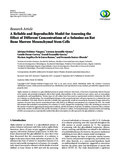| dc.rights.licence | Atribución-NoComercial 4.0 Internacional | * |
| dc.contributor.author | Ordoñez Vásquez, Adriana | |
| dc.contributor.author | Jaramillo Gómez, Lorenza María | |
| dc.contributor.author | Duran Correa, Camilo | |
| dc.contributor.author | Escamilla García, Erandi | |
| dc.contributor.author | Garza Ramos, Myriam Angélica de la | |
| dc.contributor.author | Suárez Obando, Fernando | |
| dc.date.accessioned | 2020-02-19T12:59:06Z | |
| dc.date.accessioned | 2020-04-15T13:31:18Z | |
| dc.date.available | 2020-02-19T12:59:06Z | |
| dc.date.available | 2020-04-15T13:31:18Z | |
| dc.date.created | 2017-10-22 | |
| dc.identifier | https://www.hindawi.com/journals/bmr/2017/2170306/ | spa |
| dc.identifier.issn | 2090-2999 / 2090-3006 (Electrónico) | spa |
| dc.identifier.uri | http://hdl.handle.net/10554/47255 | |
| dc.format | PDF | spa |
| dc.format.mimetype | application/pdf | spa |
| dc.language | spa | spa |
| dc.rights.uri | http://creativecommons.org/licenses/by-nc/4.0/ | * |
| dc.source | Bone Marrow Research; (2017) | spa |
| dc.title | A reliable and reproducible model for assessing the effect of different concentrations of of 𝛼-solanine on ratbone marrow mesenchymal stem cells | spa |
| dc.type | info:eu-repo/semantics/article | |
| dc.type.hasversion | http://purl.org/coar/version/c_ab4af688f83e57aa | |
| dc.description.quartilescopus | Q3 | spa |
| dc.title.english | A reliable and reproducible model for assessing the effect of different concentrations of 𝛼-solanine on ratbone marrow mesenchymal stem cells | spa |
| dc.identifier.doi | https://doi.org/10.1155/2017/2170306 | spa |
| dc.description.tipoarticulo | Artículo original | spa |
| dc.description.paginas | 1-7 | spa |
| dc.format.soporte | Papel / Electrónico | spa |
| dc.subject.keyword | Reproducible model | spa |
| dc.subject.keyword | Rat bone | spa |
| dc.subject.keyword | Stem cells | spa |
| dc.description.abstractenglish | Alpha-solanine (𝛼-solanine) is a glycoalkaloid present in potato (Solatium tuberosum). It has been of particular interest because of its toxicity and potential teratogenic effects that include abnormalities of the central nervous system, such as exencephaly, encephalocele, and anophthalmia. Various types of cell culture have been used as experimental models to determine the effect of 𝛼-solanine on cell physiology. The morphological changes in the mesenchymal stem cell upon exposure to 𝛼-solanine have not been established. This study aimed to describe a reliable and reproducible model for assessing the structural changes induced by exposure of mouse bone marrow mesenchymal stem cells (MSCs) to different concentrations of 𝛼-solanine for 24 h. The results demonstrate that nonlethal concentrations of a-solanine (2-6 pM) changed the morphology of the cells, including an increase in the number of nucleoli, suggesting elevated protein synthesis, and the formation of spicules. In addition, treatment with 𝛼-solanine reduced the number of adherent cells and the formation of colonies in culture. Immunophenotypic characterization and staining of MSCs are proposed as a reproducible method that allows description of cells exposed to the glycoalkaloid, 𝛼-solanine. | spa |
| dc.type.local | Artículo de revista | spa |
| dc.contributor.corporatename | Pontificia Universidad Javeriana. Facultad de Medicina. Instituto de Genética Humana | |


